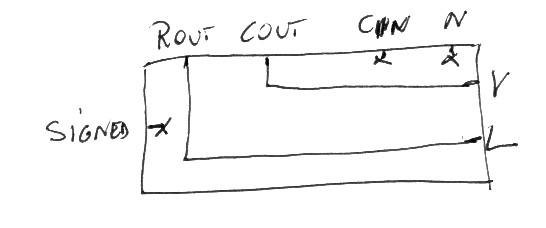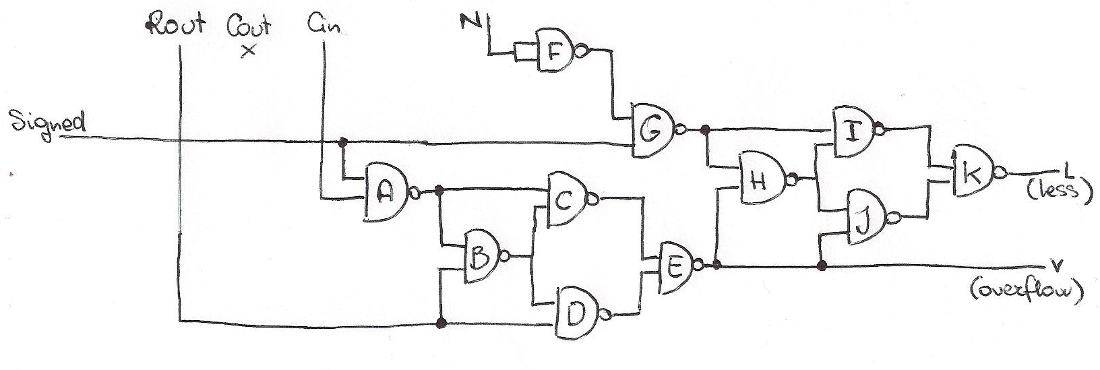No more secrets Part C: Is it smaller, larger or overflows?
The overflow and compare module is provided in two 'flavours'.
The simplest module does not require any breadboard. This module is not able and the L bit to the Rcout output of the same to work on signed data. The V and L output lines are simply connected respectively to the Cout and Rcout outputs of the full adder of the most significant bit.
This is the 'circuit':
The second implementation requires all the NAND gates of a breadboard and is able to detect overflows and compute comparisons on signed and unsigned numbers. There is a specific input 'signed' which determines whether the data are to be regarded as signed or unsigned and uses the correct overflow detection or comparison algorithm.
It is worth recalling that all the other components of the ALU compute sums, subtractions using signed or unsigned numbers anyway, no matters which overflow/comparison circuit we are using. The computations are the same, input and output data just uses different encodings.
This is the circuit:
and this is the map for jumpers:
Signed -> AG Rout -> BD Cin -> A N -> FF A -> BC B -> CD C -> E D -> E E -> HJ outV F -> G G -> HI H -> IJ I -> K J -> K K -> outL

